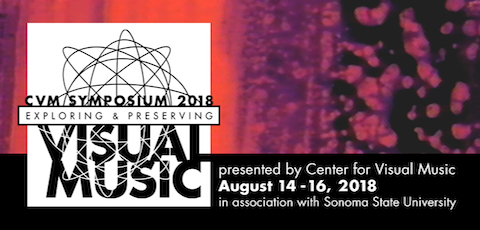Talk: Teaching Visual Music
Düsseldorf is the home of two specialized undergraduate programs offering a major in Visual Music. My talk will explore how this concentration was established and how it operates. At the Robert Schumann Conservatory, a prestigious music academy in western Germany, undergraduate students can choose to major in Visual Music. All students must pass an entrance exam on their instrument in order to be accepted into the programs. They consider themselves primarily musicians.
My professional background is in motion design for advertising, broadcast, and music videos. I started teaching motion design in 1998 at Germany’s leading film school. When I was appointed as tenured professor for Digital Visual Media in 2004 at Robert Schumann Conservatory I considered how to start a dialogue with musicians who had no exposure to, or even interest in my field. With a team of four assistant professors, one engineer, and half a dozen tutors we developed a Visual Music concentration. I will discuss the team of lecturers, their classes and approaches, and show a few exceptional projects by our students.
Prof. Ulla Barthold, a cinematographer who has worked with many artists and composers, teaches “Visual composition.” Falk Grieffenhagen, a current member of the band Kraftwerk, teaches “Visual Music Tools” like MaxMSP/Jitter and Resolume Arena. In the class of Christian Schäfer, who is an internationally renowned DJ and graphic designer, the students compose their own tracks from graphic notation systems of fellow students and design a vinyl cover for it. And last but not least, Marcus Schmickler, an internationally recognized composer, leads two seminars, one for composition in a visual music context, and the other a series of project meetings where the students discuss their final projects, e.g. multimedia installations and audiovisual performances for their final show in a public space.
I run three seminars, the first one introduces different artists from this genre, the focus of the second is in developing a concept for an audiovisual project, and the third is a series of project meetings leading up to the exams. Currently we are developing graduate seminars in visual music as part of the Transmedia Form major for our new Masters program called Sound and Reality.

